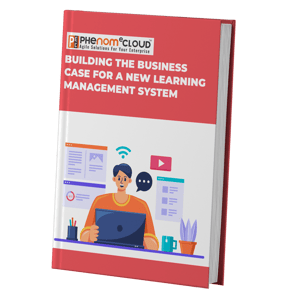
Depending on your perspective, the Learning and Development profession is in a tailspin, on the cusp of game-changing transformation, or both. We have seen first-hand entire L&D departments defunded and outsourced. Others take the lead in building agile learning cultures. More often, we see small initiatives making a significant impact.
The L&D profession has not kept pace with changes in learning over the past fifteen years. Respondents in the May 2016 Towards Maturity In-Focus study on the future of learning showed a lack of progress in understanding and using new learning approaches.
- “28% agree L&D staff keep up to date with the latest research into learning theory.
- 30% are proactive in understanding how learners currently learn what they need for their job.
- 35% involve users in the design of the most appropriate learning approach.”
According to the study, L&D leaders are acting on the technical and development skill gaps in their organizations, but they have a long way to go. Only 20% can facilitate social learning, and 32% have the skills to deliver performance support.
LMS vendors have also struggled to keep up with advances in learning methods and technology because their products were designed long ago as course catalogs. With the explosive growth of online consumerized learning, traditional LMS software could not keep up. Many became nothing more than compliance and talent platforms.
The LMS market reacted in a big way. We now have almost 700 vendors, and most of them are specialists. We have vendors who focus on learning for employees, channel and partner learning, or customers, and all-purpose systems that satisfy all three requirements. Some specialize more narrowly within sectors and others on small industry niches. Many of these vendors are developing xAPI technology, which enables tracking any type of learning experience.
In the past three years, a new industry sprouted around self-directed online, experiential, and social learning. Online collaboration tools are available that can embed just-in-time learning into work processes. Vendors offer open learning platforms where people can discover, create, and share learning experiences and build learning communities, and you may find your best solution is to add these services or collaboration software to your current technology.
How you approach modernization of your learning platforms depends on the learning strategy for each of your audiences. Your employees, contingent workers, partners, and customers may have very different needs. You may not have the budget to replace your entire learning ecosystem, and even if you did, it might not be the right thing to do.
We recommend you consider the alternatives available and plan a course of action that will maximize your ability to meet future challenges. We hope you find these thoughts helpful.
- A multi-purpose platform may be the right option if you have similar content across learning audiences and your business groups agree on a single solution. You can enjoy economies of scale and reduce the need to manage multiple vendors.
- Specialists are your best option if you need to provide different content and delivery methods to each of your audiences. If you find a simpler solution will suffice, your best option might be low-cost open-source software. Niche providers are often more agile than those of ERP vendors, where you may wait for your vendor to catch up with recent innovations.
- Another reason to use specialists is when you have little or no L&D budget for software improvements. Learning needs are not an L&D problem—they are a business problem, and each of your leaders has unique needs. If Marketing needs a customer learning solution, you can partner with them to find the right solution for their learning needs and help them source the content.
- Connections between business systems have become standardized, and many vendors offer plug and play integrations. If you make integration a part of your data management and governance program, you can put controls in place to ensure your integrations don’t get out of hand.
- Analytics have become necessary to improve learning and its impact on the business. Many LMS products have embedded reporting systems, and the number of those with analytical tools is growing. You will need analytics tools that connect to other business systems and applications. We recommend investigating analytics platforms you can embed in each of your applications over time.
Software alone will not make your company an agile learning organization, but you can make sure technology is not holding you back.
References:
1. Overton, Laura, and Genny Dixon, PhD. "In-Focus: Preparing for the Future of Learning (2016)." Towards Maturity. May 9, 2016.
2. Bersin, Josh. "Viewpoint: The Corporate Learning Technology Market Takes a Turn." Society for Human Resource Management. November 21, 2016.
Getting approval for learning management initiatives can be a challenge, but there is a way
If you are an L&D leader who would rather facilitate a leadership course the crunch numbers, this e-book is for you

PhenomᵉCloud is a comprehensive technology solutions provider committed to empowering businesses to overcome challenges, enhance their workforce capabilities, and achieve superior outcomes.

Leave a Comment